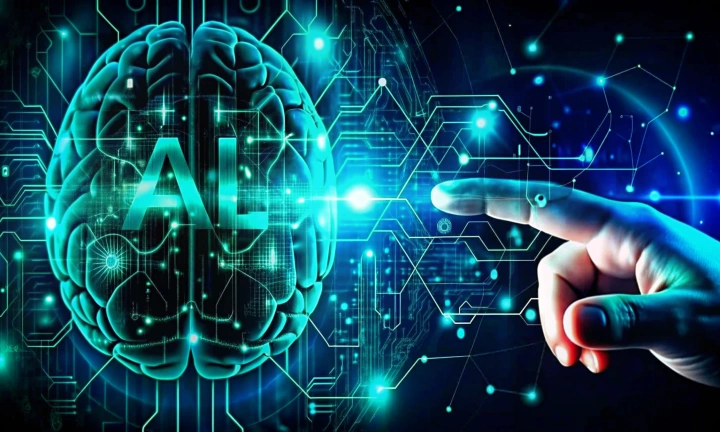In today’s world, most people are accustomed to hearing the word AI or artificial intelligence. Although most of the time, it is used in the context of entertainment and gaming. There are quite a few negative assumptions, too, regarding artificial intelligence being a sentient army trying to take over the world. However, this isn’t remotely true, and there are various implementations of artificial intelligence in your daily life. People are quite skeptical about its applications when it comes to using artificial intelligence in HCM or Human Capital Management.
They often assume that it is aimed at replacing the human workforce with robots and computers that can do the work instead. This is usually not the case, and it is used to leverage artificial intelligence to aid the functions of HCM professionals. The purpose of artificial intelligence is to replicate human-like logical thinking to help automate the work. SAP is an excellent example of involving artificial intelligence in human capital management.
Using Data to Your Advantage with Artificial Intelligence
Machine Learning is used in a more refined example of artificial intelligence. It allows the machine to automate actions by learning from the initial input without requiring human intervention. This also enables the use of artificial intelligence to solve more complex problems. AI and machine learning are more data-centric, using the input provided to predict their processing.
It analyzes the data to find patterns, refine assumptions, and suggest possible alterations. This is of great use to employers who can leverage it for analyzing possible candidates and also the performance of existing employees based on their performance and track records.
The algorithms provided by using artificial intelligence and machine learning are now being incorporated into HR platforms. These tools are ideal for enhancing HR processes’ overall efficiency and accuracy. It has the scope of helping employers in determining the pay scale, resource management, and skill allotment of their employees. It has proved itself to be one of the best ways to utilize data and provide predictions and recommendations based on the data.
SAP SuccessFactors provides a model for Human Experience Management (HXM), making human capital management much easier. This is aimed at the convenience of employees who can make use of it to assess themselves. It also helps employers identify key skills and factors that can help them better. Designate employee roles based on their specific abilities. It also ensures that employees feel connected and supported while ensuring their empowerment throughout the various stages of their employment lifecycle.
Using AI to Augment Different Areas of HR Management
HR management is a very time-consuming and exerting process that can be mitigated by using artificial intelligence. SAP SuccessFactors is designed specifically for this purpose. Below are some ways employers can leverage machine learning and artificial intelligence to their advantage.
- Hiring and Onboarding: Hiring and onboarding have been made a lot easier thanks to the use of AI. It can be used to analyze the role type and provide data on the predicted time for its fulfillment. This can then help employers to reprioritize their needs accordingly.
It can also ease the process of onboarding new employees greatly. Artificial intelligence with machine learning can be used to assess their preexisting skills and talents to suggest new areas for improvement. This provides a personalized onboarding process for the employees and helps increase their productivity.
- Learning and Development: Artificial intelligence creates a developmental environment for new candidates and existing employees alike. It can provide relevant learning experiences to the employees by identifying their individual skills. It can also assess them accordingly by keeping a tab on the latest skill tracking and knowledge acquisition. The assessment is done based on several other factors as well.
It takes into account their recent performance, certifications and badges earned to update employee profiles. This makes it easier for the organization to do an internal assessment of employees and their assignments to relevant departments. This creates better strategic opportunities for the organization to fill any possible skill gaps.
- Guidance and Efficiency: The exit of active employees can drastically affect turnover. Machine learning can be utilized to identify the key factors for employee contentment. This can also be a major indicator of the organization’s employee flight risk and areas for improvement.
Artificial intelligence can easily compare the company’s historical data to procure statistics on factors influencing employee performance. These include their gender, age group, geographical considerations, and pay group. Identifying these key factors can particularly aid in employee flight risk management while enhancing the overall experience of employees within the organization.
- Pay and Benefits: Managing the organization’s annual expenditure is crucial. Artificial intelligence helps synchronize the data based on the value of the specific skill with markets worldwide. It also considers the demand for the skill before finalizing compensation judgments. Artificial intelligence also helps to evaluate employees’ skills and experience.
This helps the company determine the remuneration to be offered for the particular tenure. One of the main factors taken into account when determining the compensation selections is the replacement financing the organization will require in the future for an employee with the same skill set. It can be an effective tool in finalizing the annual incurred costs of the organization.
Conclusion
Artificial intelligence and machine learning can solve numerous problems when it comes to HR management. It can help identify key factors for employee satisfaction and provide scope for performance improvement. Basically, any organization will perform better in terms of diversification, market development, and financial growth with these technologies at its disposal. Learning from previous data and advancing with a strategy to improve employee status while keeping the organization’s objectives in mind is of great importance. The main objective is to assess existing data and provide future predictions that can help with the organization’s financial growth while keeping the employees’ well-being in mind. Therefore, stop contemplating and get in touch with the experts at our SAP consulting company and transform your business for good.

